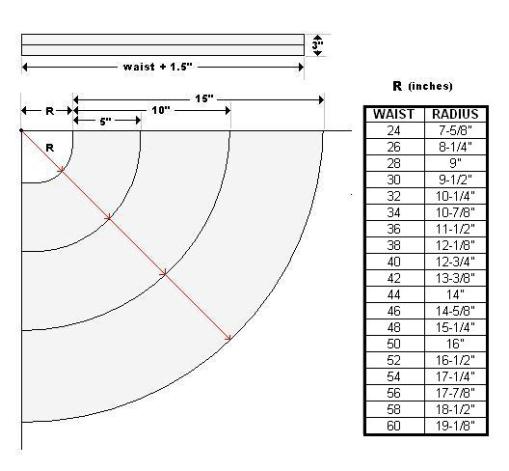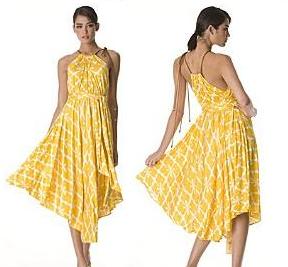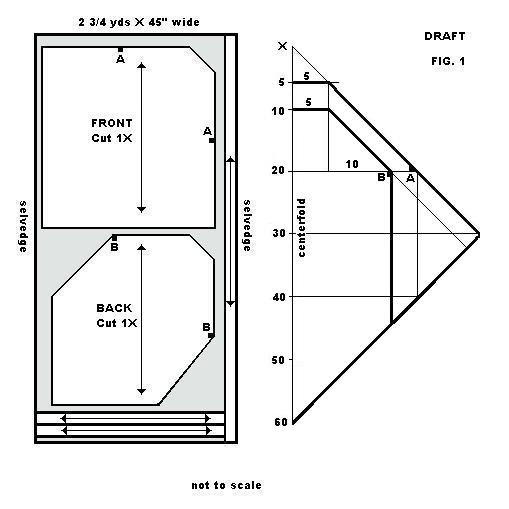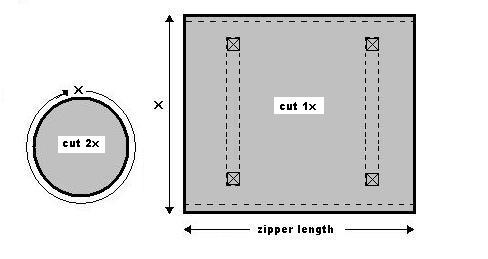Featured: Vest from Chulo Pony
There’s something a bit redneck/hillbilly and then there also a sort of British Hunting Party aura too. One thing’s certain, buffalo plaid is going to take a front seat on all sorts of garments this fall! Buffalo plaid flooded the Ralph Lauren New York runway and that of Vancouver’s Chulo Pony during Fashion Week. This is an easy-fit boxy vest that is easy to sew.
MEASUREMENTS
Bust – measure just under the arms around the fullest part of chest.
Waist – measure around narrowest part of torso.
High Hip – measure 6 inches [15.5 cm] below waist around the hips.
Back-waist length – measure from nape of neck to waist level
Shoulder length – measure shoulder from ball socket to side of neck.
Armhole depth – measure from nape of neck to under arm level.
Back width – measure from armhole to armhole across shoulder blades.
Neck – measure around base of neck.
PATTERN DRAFT
Square down from 0; square halfway across the block.
0-1 = 5/8″ [1.5 cm]
1-2 = armhole depth plus 1″ [2.5 cm]; square across.
2-3 = half bust plus 3″ [7.5 cm]. Square up and down; mark this line the CF line.
3-4 = 0-2 (add 1/8″ [0.3 cm] for every size above size 14 [bust=36″])
Square across from 4.
1-5 = back waist length; square across to 6.
5-7 = waist to hem (6″ [15.5 cm] + 2″ [5 cm] hem allowance = 8″ [20.5 cm])
Vest Back
0-9 = 1/5 of neck size minus 1/8′ [0.3 cm]; draw in back neck curve 1-9.
1-10 = 1/5 of armhole depth minus 3/8″ [1 cm]; square halfway across draft.
9-11 = shoulder length plus 3/8″ [1 cm]. Draw back shoulder line to touch the line from 10.
2-12 = half of the back width plus 3/8″ [1 cm] ease; square up to 13.
12 – 14 = half the measurement of 12-13.
Vest Front
4-15 = 1/5 of neck size minus ¼” [0.7 cm].
4-16 = 1/5 of neck plus 5/8″ [1.5 cm]; draw in front neck curve 15-16.
17-16 = 2″ [5 cm]. Square down to locate 20. This is the front closure extension.
18-3 = half chest plus 5/8″ [1.5 cm]; square up.
19-18 = half the measurement 3-16 minus ¾” [2 cm].
21-11 = ¼” [0.75 cm]; square out 6″ [15 cm] to 22.
23-15 Draw a tangent line from 15, shoulder length plus ¼ ” [0.75 cm] to touch line from 21-22.
24-18 = midway between 12 and 18; square down to point 25 on waistline and point 26 on hemline.
At side seam, measure out ½ ” [1.25 cm] on either side of point 25 and shape with a smooth curve for waist suppression.
Draw armhole as shown on draft touching points 11, 14, 24, 19, and 23.
Vest Collar
27-15 = 0-9; square up from 27.
28-27 = 5/8″ [1.5 cm].
29-28 = 20″ [51 cm]. This is the collar depth.
30-15 = 28-29.
Draw the outer edge of collar parallel to line 15-28, passing through point 30 and gently tapering the curve to point 17.
Vest Collar Facing
Measure 2″ [5 cm] from 15 on shoulderline.
Measure from 8 the length of 8-20.
Join these 2 point as shown with dotted line.
Trace off the front edge, collar, shoulder, dotted line, hem and CF line to create the facing piece.
Grainlines are parallel to CB and CF lines.
A hem allowance is 2″ [5 cm] turn under. Seam allowances are 3/8″ [1 cm}.
Sash
A-B = 9″ [23 cm].
A-C = 2 times waist measurement plus ¾” [2 cm].
B-D = A-C.
E = half of A-B
F = half of C-D
Join E and F to create foldline of sash.
CUTTING
Vest Front – cut 2X self
Vest Back – cut 1X on fold; cut 1X lining on fold
Vest Collar Facing – cut 2X self; cut 2X interfacing
Sash – cut 1X self
Front Lining – cut 2X lining (NOTE: add ¾” [2 cm] to front edge of this piece for seam allowance.)
ASSEMBLY
- Fold sash piece with right sides together and stitch along the raw edges leaving a 5″ [13 cm] opening to turn out. Grade corners and turn right side out. Slipstitch opening closed and press edges. Topstitch around perimeter of sash.
- Iron fusible interfacing onto back of collar facing pieces, following manufacturer’s directions.
- With right sides together (RST), pin/baste collar facing to front lining. Sew seam and press seam allowance towards lining.
- Staystitch shoulder-neck point (#15) on collar facing to reinforce corner. Clip seam allowance to the stitching at a 45° angle.
- With RST, pin/baste lining fronts to lining back at sideseams and shoulders. Sew seams and press open.
- With RST, pin /baste CB seam of collar facing together. Sew seam and press open. Then pin/baste the collar to the back neckline and sew between the two clips. Press seam open.
- Staystitch shoulder-neck point (#15) on vest fronts to reinforce corner. Clip seam allowance to the stitching at a 45° angle.
- With RST, pin/baste vest fronts to vest back at sideseams and shoulders. Sew seams and press open.
- With RST, pin /baste CB seam of under-collar together. Sew seam and press open.
- With RST, pin /baste CB seam of collar together. Sew seam and press open. Then pin/baste the collar to the back neckline and sew between the two clips. Press seam open.
- Place the lined portion with the vest right sides together, aligning them up along the edges. Pin/baste the two halves of the vest together.
- Stitch the vests along the front and collar, and around the armholes. Do a parallel row of stitching 1/8″ [0.25 cm] on armholes and trim seam allowances away. Grade seams and trim corners.
- Stitch along the lower edge of the vest front facing only, 2″ [5cm] and trim away the excess material. Leave the lower edge of the lining unstitched.
- Turn the vest right side out. Use a bone turner to gently push out the edges of the vest and make sure it’s fully right side out. Entering from the bottom, match up the seam allowances of the back neckline and collar and baste together.
- Turn the bottom edge 2″ [5 cm] to the inside of the vest, so that the hemline is even with the rest of the facing. Press the folded edges. Turn the bottom edge of the lining and lay on top of the hem just shy of the fold. Baste the two layers together.
- Topstitch along the outside edges of the vest and the armholes, 1/4 inch [0.5 cm] from the edge. Make sure the lower edge of the back of the vest gets sewn closed in this seam.
- Add dome snaps or Velcro® tabs to front closure of the vest, if desired.


























